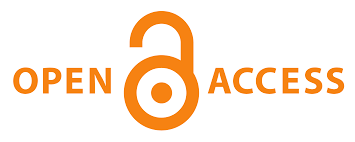Developing English Speaking Materials for Tenth Grade Students of Conversation Program at Madrasah Aliyah (MA) Ali Maksum
Main Article Content
Ayu Kurniasih
Khusnul Harsul Lisan
The purpose of this study is to develop English learning materials for MA Ali Maksum's Conversational Program. Because the presence of English materials in speaking classes is critical, material development may aid students in learning. Materials that help students improve their skills and motivate them are those that are personalised to the student's situation and background. This research and development (R&D) study employs the ADDIE instructional design model. This research consists of needs analysis, syllabus design, English speaking material development, product validation, product testing, and final product. Interviewees include experienced English teachers, an expert in English materials design, and 10th grade students from MA Ali Maksum's Conversation Program. Student questionnaires, student and teacher interview guides, and validation sheets for expert judgment are among the data collection tools used. The data obtained were analyzed quantitatively and qualitatively. The result showed that the average interval for the English module was 2.26 x 3.24, and material expert validation ranged from 2.80 to 3.40, classifying this module as good and valid with several revisions. Therefore, this English module can be used to motivate students while also assisting them in learning English in a speaking or conversation context.
Branch, R. M. (2009). Instructional Design: The ADDIE approach (Vol. 722). New York: Springer.
Branch, R. M., & Kopcha, T. J. (2014). Instructional Design Models. Handbook of research on educational communications and technology, 77-87.
Brown, H. D. (2001). Teaching by Principle: An Interactive Approach to Language Pedagogy. 2th Edition. New York: Longman.
Brown, J. D. (2016). Introducing needs analysis and English for specific purposes. Routledge.
Busyairi, M. (2017). Education Unit Transformation for Maintain Its Existence in Islamic Boarding School: Journal of Education and Practice, 8(5) 56-64.
Kurum, E., Y. (2017). Teaching Speaking Skills. DOI: https://www.researchgate.net/publication/312538107 on March 11th 2019.
Lapele, F. (2019). Need analysis on the material development of teaching ESP speaking. ETERNAL (English, Teaching, Learning, and Research Journal), 5(2), 336-349. DOI: https://doi.org/10.24252/Eternal.V52.2019.A13
Lee, O., Llosa, L., Grapin, S., Haas, A., & Goggins, M. (2019). Science and language integration with English learners: A conceptual framework guiding instructional materials development. Science Education, 103(2), 317-337. DOI: https://doi.org/10.1002/sce.21498
Lisan, K. H. (2022). “The Role of Peer-Assisted Learning Strategies (PALS) in Enhancing Students’Reading Skills For Second Language Acquisition. Edu-ling, 5(2). DOI: https://doi.org/10.32663/edu-ling.v5i2.2681
Maksudin. (2008). Pendidikan Nilai Boarding School di SMPIT Yogyakarta, Disertasi UIN Sunan Kalijaga. (Yogyakarta: UIN Sunan Kalijaga), p. 111.
McKenney, S., & Reeves, T. C. (2014). Educational design research. Handbook of research on educational communications and technology, 131-140.
Nunan, D. (2011) Teaching English to Young Learners, First Edition. USA: Anaheim University Press.
Putri, R, F. (2019). Developing English Speaking Materials Based on Blended Learning for Tenth Grade Students’ of Hotel Accomodation at SMK Negeri 7 Medan. Medan: Program Sarjana, English and Literature Department Faculty of Languages and Arts Universitas Nageri Madan.
Rahmah, S., & Ilham, M. (2022). Management of Students' Religious Culture. Development: Studies in Educational Management and Leadership, 1(1), 39-54. DOI: https://doi.org/10.47766/development.v1i1.644
Rahmah, S., & Prasetyo, M. A. M. (2022). Quality Islamic Boarding School Model: Linking the Principles of Teacher Professionalism and Organizational Management. Al-Hayat: Journal of Islamic Education, 6(2), 161-173. DOI: https://doi.org/10.35723/ajie.v6i2.249
Rahman, F., & Saputra, N. (2021). English as International Language Revisited: Implications on South Korea’s ELT Context. Scope: Journal of English Language Teaching, 6(1), 08-15. DOI: http://dx.doi.org/10.30998/scope.v6i1.9383
Richard, J and Rodgers, T. (2014) Approaches and Methods in Language Teaching, Third Edition. Cambirdge University Press.
Sinaga, S, D. (2018). Developing English Speaking Materials Based On Task-Based Learning For Eight Grade Of Junior High School. Medan: Skripsi English Education Program, Faculty of Teacher Training and Education Universitas of Muhammadiyah Sumatera Utara Medan.
Tiwari, S.R. (2008). Teaching of English. New Delhi: S.B. Nangia APH Publishing Corporation.
Tomlinson, B. (1998). Materials Development in Language Teaching. Cambridge: Cambridge University Press.
Tomlinson, B. (2012). Materials development for language learning and teaching. Language teaching, 45(2), 143-179.
Tomlinson, B. (Ed.). (2008). English language learning materials: A critical review.
Tomlinson, B. (Ed.). (2011). Materials development in language teaching. Cambridge University Press.
Undang-Undang Repuplik Indonesia No.20 tahun 2003 tentang Sistem Pendidikan Nasional.
Victoria Bull (ed), Oxford : Learner’s Pocket Dictionary, Fourth Edition, (New York: Oxford University Press, 2001), pp. 43.
Yana, D. (2016). Developing English Speaking Learning Materials for Saturday English School Program. Riau: Journal Anglo-Saxon. 7(1). DOI: https://doi.org/10.33373/anglo.v7i1.492
Yassi, A. H. (2018). Syllabus Design of English Language Teaching. Prenada Media.
Ayu Kurniasih , UNU Yogyakarta
hopefully the article can be published soon. Thank you




